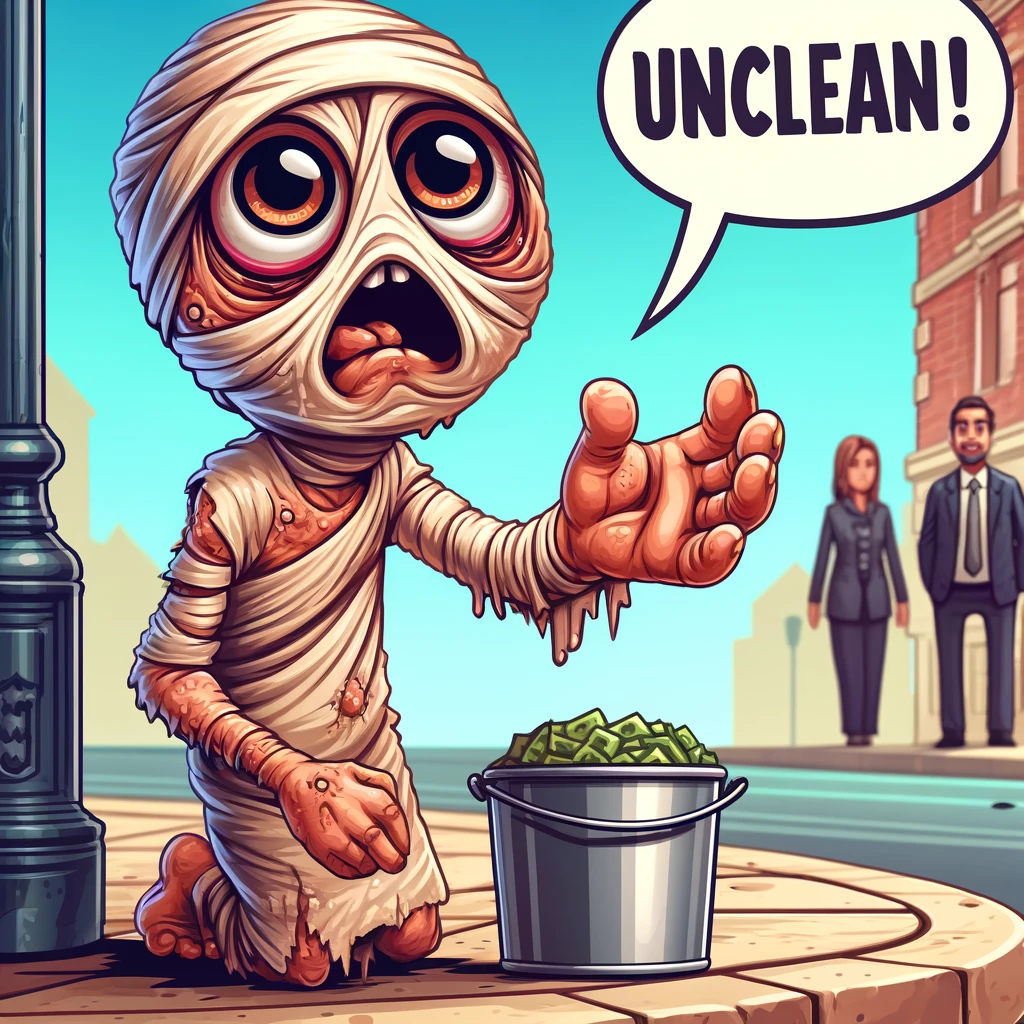In parts 1 & 2 we discussed the wide range of possibilities available to us for Isaiah 1:18 in keeping with both the flexibility of dye/color imagery in the Biblical world and the grammatical flexibility of Hebrew poetry and verbs in general. We posited 6 interpretations commonly given to the verse.
- Promise of forgiveness (in Jesus). [Supposed Relationship to verse 19-20 seems odd.]
- Early pomp & arrogance of sin leading to the price… poverty & washed out lives. [garment imagery] Followed by a call to short-circuit the pattern by making better choices.
- A natural worsening of sin unless checked [disease imagery.] Followed by a call to short-circuit the pattern by making better choices.
- A question of whether Israel imagines that these sins will simply get better on their own. Followed by a call to face reality and make right choices.
- A sarcastic reference to their ability to minimize the horror of their sin in their hearts. Followed by a call to face reality and to make the right choices.
- A promise of possibilities for forgiveness if they make the right choices. Can or might… not WILL.
The question at hand concerns the context in which Isaiah 1:18 finds itself and whether one or more of these choices can be eliminated based on that context.
The context of Isaiah 1:18 is three-fold.
1. We have already hinted at the first context, that of reading 1:18 in light of 1:19-20. Does it make sense (see interpretation #1) that a clear promise of forgiveness in one breath is made contingent on repentance and obedience in the next breath? Not impossible, one might say, if the flow of the discussion shifts from a general promise to a specific participation, but that does not seem to be the case here.
2. The second context is date and background event. The information within chapter 1 seems to suggest that the nation is, contra interpretation # 2, already in a battered and abused state, (not a euphoric early glow in sins pleasures) and have been infiltrated by foreigners who have devoured much of the land and its goods. Thus, the hinge event for so much of Isaiah’s prophecies seems the best fit for dating. The invasion of Sennacharib is THE event upon which the book’s halves hang together, transitioning from Judah’s concerns over the Assyrian Crisis to a revelation of Babylon, and not Assyria as the nation through whom the much feared annihilation will come, through whom the ultimate exile will be accomplished.
3. The ultimate context is genre. Isaiah 1 is a Lawsuit prophecy, a RIB prophecy, a Judgment oracle in the mouth of a covenant ambassador accusing Judah of violating their covenant obligation to YHWH. As such it follows a specific pattern, into which Isaiah 1:18 fits nicely. In a lawsuit prophecy the seven parts of the Suzerain vassal treaty which served as the foundation for the Mosaic covenant establishes the bulk of the prophecies responses to Israel’s sin.
In answer to the preamble announcing YHWH as covenant Lord the prophet lists YHWH as the judge and plaintive in the lawsuit in Isaiah 1:2.
In answer to the witnesses of the covenant (what in Deuteronomy is the heavens and the earth [Deuteronomy 4:26; Deuteronomy 30:19 & Deuteronomy 31:28) Isaiah 1:2 calls heaven and earth to witness against Israel in the lawsuit.
The historical prologue which details the faithfulness of the Suzerain Lord to his vassal is answered in Isaiah 2b-20 in a detailing of the history of the problem, a disclosure of the faithful goodness of the Suzerain in the face of the betrayal of the vassal. In caveman speak it’s, “YHWH good… Israel bad.” They have despised God, wallowed in their sin, resisted change no matter how much discipline YHWH has poured out upon them. At present they sit stubbornly in their sin amid the ruin that their wickedness has caused, yet determined to stay their sinful course. The Prophet appeals still to YHWH’s goodness as the only reason even one of them breaths, but they prefer empty religious show to repentance. They are like those who raise their hands in worship with the blood of their victims still dripping from their fingers, and God does not hear such prayers or receive such worship. He calls them to cleanse themselves and to change their ways. He calls them in 1:18 to reason with Him. RED-WHITE… if they obey their land will be healed, if they refuse to repent, YHWH promises they will be devoured by the sword.
The stipulations of the Mosaic covenant are answered in Isaiah 1:21-23 with an official list of the charges against Israel. They have abandoned righteousness, embraced murder, corrupted their government with theft and bribery, abandoning all justice for the easily victimized.
The curses and blessings of the Mosaic covenant are answered in Isaiah 1:24-31 with a combination of sentencing and punishment for the guilty and a promise of ultimate restoration for the nation. God will purge the nation of the wicked with judgment, and bring healing and justice through those who repent and turn to righteousness. He will consume the rebels and destroy all remnants of their pagan worship from the land.
So, in the midst of a Lawsuit oracle, while the prophet is still detailing the history of the Graciousness of the Suzerain and the perpetual corruption of the vassal, which of the six interpretations do you expect to discover?
As for me, #1 seems impossible. #2 seems unlikely. #5 seems a tad obscure. #3 #4 both seem quite possible, with #6 proving the easiest to swallow for those committed to the simplest explanation of the grammar and the BAD to GOOD imagery for RED to WHITE.
More importantly, the process of evaluation and discovery proves most valuable of all, whichever you choose.
Discover more from Biblical Literacy with Dr. Andrew D. Sargent
Subscribe to get the latest posts sent to your email.


